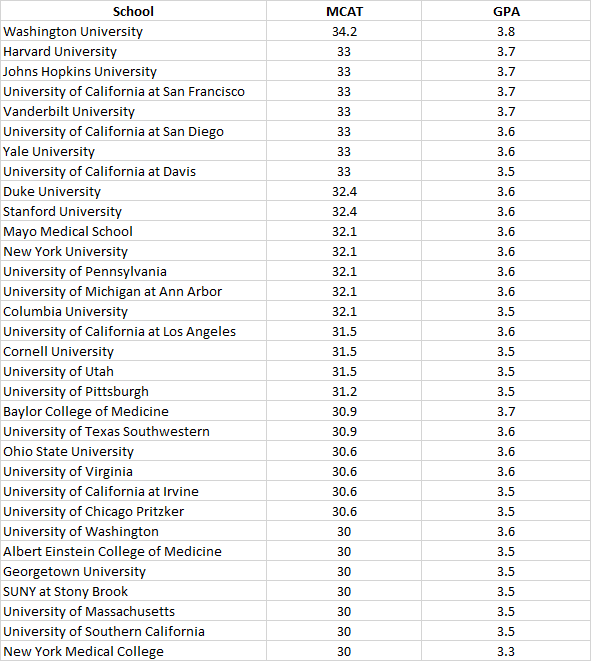- Joined
- Apr 6, 2014
- Messages
- 14,146
- Reaction score
- 22,793
Found this during a discussion buried in another thread and through it warranted it's own space to be shared.
I found this from a SUNY bio department webpage showing stats from 2006.
Apparently, these schools were the only places with a 30+ MCAT in the early/mid 2000s. The best of the best were about 32-34:

Pretty shocking to think that in about ten years, these schools moved their score distribution so high that their 10th percentiles are now at their old medians.
Some of the biggest, like at Chicago, jumped half a dozen points or more.
The MCAT distribution of scores was very similar back in the day, by the way - here is the 2006 distribution (also put it below), with a 30 and 33 the same as today, at 79th and 91st percentiles.

I found this from a SUNY bio department webpage showing stats from 2006.
Apparently, these schools were the only places with a 30+ MCAT in the early/mid 2000s. The best of the best were about 32-34:

Pretty shocking to think that in about ten years, these schools moved their score distribution so high that their 10th percentiles are now at their old medians.
Some of the biggest, like at Chicago, jumped half a dozen points or more.
The MCAT distribution of scores was very similar back in the day, by the way - here is the 2006 distribution (also put it below), with a 30 and 33 the same as today, at 79th and 91st percentiles.


